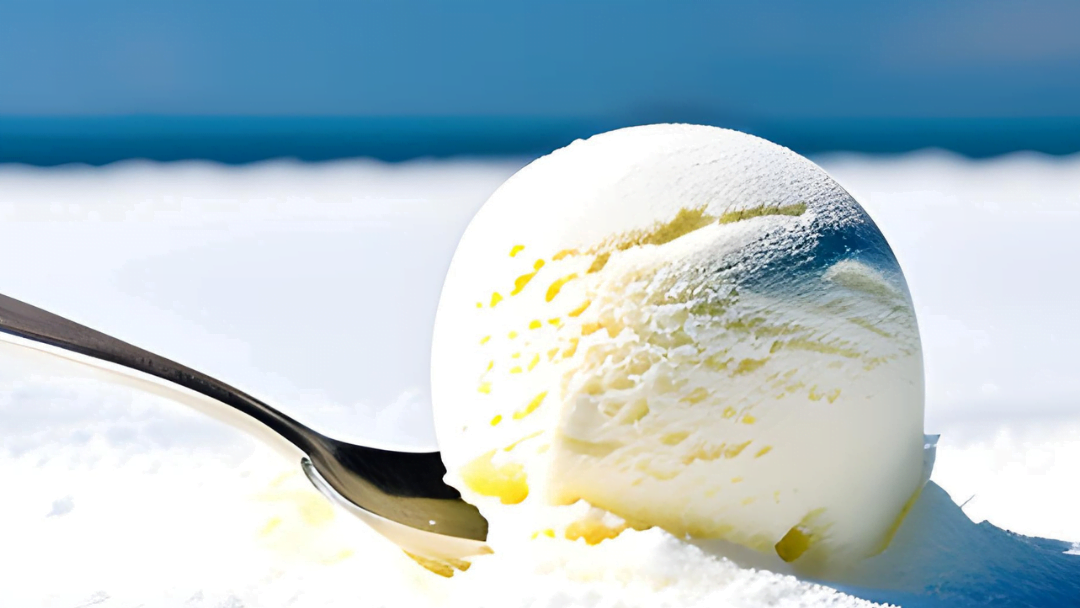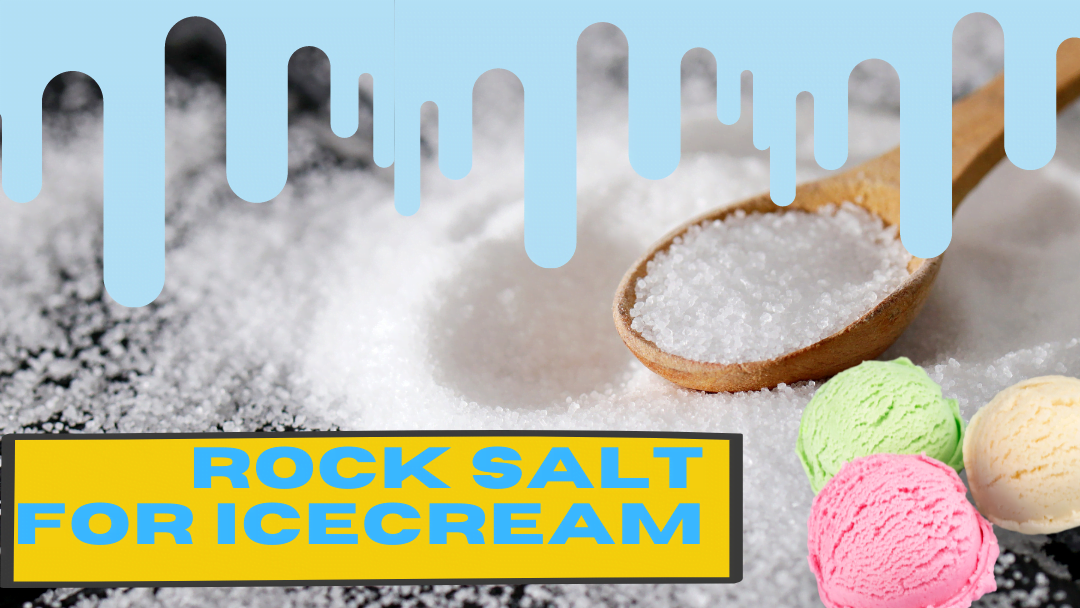Greetings, fellow fans of frozen delights! Let’s start on a journey into the realm of frostiness and explore the interesting connection between ice and an unexpected companion – rock salt for ice cream! Yes, you read that properly – salt and ice! “Salt in ice?” you might wonder.
Table of Contents
Understanding the Science of Salt and Ice

To begin, let’s look into the scientific basis behind this chilly phenomenon. Salt is no ordinary seasoning; it transforms into a magical agent when it hits the ice.
Imagine this: just as a magician conjures a rabbit from a hat, salt does something even more interesting with ice – it prompts it to melt!
Why rock salt for ice cream?
Water’s freezing/melting point can be lowered by using salt. Consider how ice-melting salt changes the roads.
Similarly, adding rock salt to the ice that circles the ice cream base lowers the temperature sufficiently to allow the ice cream inside to thicken and freeze before the ice outside the base melts completely.
Now, you might be confused. After all, isn’t the aim to keep things in their frozen state? Absolutely! However, this story comes with an interesting twist.
Understanding Freezing Point Depression

Let’s accept scientific terms for a moment. The magical effect that salt brings about rests on a concept called freezing point depression.
Imagine you’re trying to freeze something, like a mixture for making popsicles; you’d naturally place it in the fridge, right? The freezing point is the temperature at which a liquid turns into a solid – just like water becoming ice.
Here’s where rock salt for ice cream comes into play with its magical touch. When salt is sprinkled onto ice, it doesn’t quickly solidify, as you might think.
Surprisingly, salt drops the freezing point of the ice, making it colder than normal. As a result, while the ice might show a tendency to melt slightly, it also absorbs a significant amount of heat from its surroundings, staying refreshingly cold.
This is comparable to the ice wearing the attire of a superhero, capable of withstanding heat while recognizing its icy character!
The Importance of This Observation

A valid question! Imagine a summer lunch – a variety of drinks, snacks, and, of course, ice cream.
An issue appears – the ice cream starts melting rapidly, almost as fast as a brain freeze hits! Here’s where our rock salt for ice cream steps in as the hero with an answer.
By incorporating salt into the ice within your beverage container, you’re making an environment that is exceptionally cold, surpassing the usual icy state. As a result, your drinks, snacks, and ice cream can stay in a state of delayed coldness.
In essence, it’s like giving your snacks an exclusive pass to an icy event – they get to savor the chilliness for a longer duration! This gives you the freedom to enjoy your treats without constant concerns about them turning into liquid.
How much rock salt for ice cream ?
The amount of rock salt needed for making ice cream depends on the size of your ice cream maker and the specific instructions provided with the machine. Generally, for a standard home ice cream maker, you’ll need about 1 to 2 cups of rock salt for every 4 to 6 cups of ice.
It’s important to follow the manufacturer’s recommendations for your specific ice cream maker model. Using too much or too little rock salt can affect the freezing process and the final texture of your ice cream. Always refer to the instruction manual that came with your ice cream maker for the most accurate guidance on the amount of rock salt to use.
Applying the Concept: A Playful Experiment
Let’s move from idea to execution. Imagine you’re in the process of making homemade ice cream. The ingredients are perfectly blended, and it’s time to turn this mixture into the lovely creamy treat you’ve all been waiting for.
But how do you ensure the desired result without a sudden shift to a liquid state? Enter the rock salt for ice cream, set to play a pivotal role once again. When making ice cream, you might utilize a specific ice cream machine.
This setup includes a bowl holding the ice cream mixture and an adjacent container filled with ice and rock salt. As the ice cream mixture experiences the mixing process, the salt-infused ice surrounding it drops to impressively low temperatures, supporting the conversion of the mixture into the tasty delight we know as ice cream.

Adding a Touch of Fun and Engaging Treat
Having gone anywhere through the world of scientific fascination, let’s add a bit of fun and fascinating pieces of knowledge about the interplay between salt and ice.
Did you know that old countries used salt for food preservation? This historical trend matches the modern-day focus on food preservation.
Furthermore, here’s a captivating treat: certain regions depend on salt to fight icy conditions on roads during winter.
Envision it as a fight between salt and ice, a competition in which salt consistently emerges victorious – resulting in safer roads without the visual effect of people slipping like penguins on an uncertain stage.
Concluding Reflections: Celebrating Salt’s Impact
In conclusion, fellow lovers of all things icy, rock salt for ice cream defeats its role as a mere flavor enhancer, emerging as an unsung hero within the world of icy efforts.
Remember that science, much like a captivating show, evokes wonder and curiosity. So, when you watch someone sprinkling salt onto the ice, you have the knowledge to offer a knowing smile and say, “Ah, a touch of enchantment added to their icy adventures!”
From now on, as you plan a summer gathering or enjoy a serving of homemade ice cream with different colors like pink, offer a silent nod of thanks to the effect of rock salt.
It represents an unassuming champion that elevates the frozen world to an unmatched level of coolness. Until we meet again, enjoy the chilliness and remember – keep it seasoned, keep it cool!
FREQUENTLY ASKED QUESTIONS
Can I Use Rock Salt for Your Ice Cream Maker?
Yes, rock salt is commonly used in ice cream makers to lower the freezing point of ice, which helps create a freezing environment for the ice cream mixture.
what is the substitute for rock salt for ice cream
A common substitute for rock salt in ice cream makers is table salt. While it doesn’t work as effectively as rock salt, it can still help lower the freezing point of ice and aid in the ice cream-making process.
Where to buy rock salt for ice cream makers?
You can buy rock salt for ice cream at various locations, including grocery stores, supermarkets, kitchen supply stores, and online retailers.

